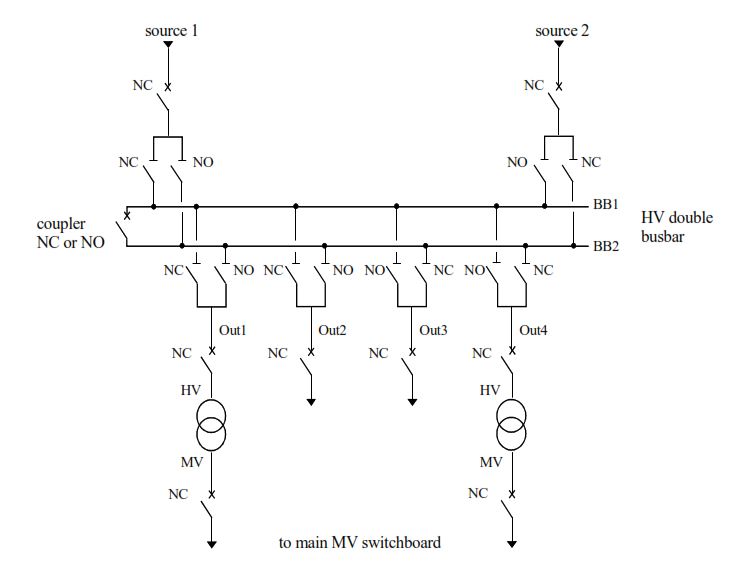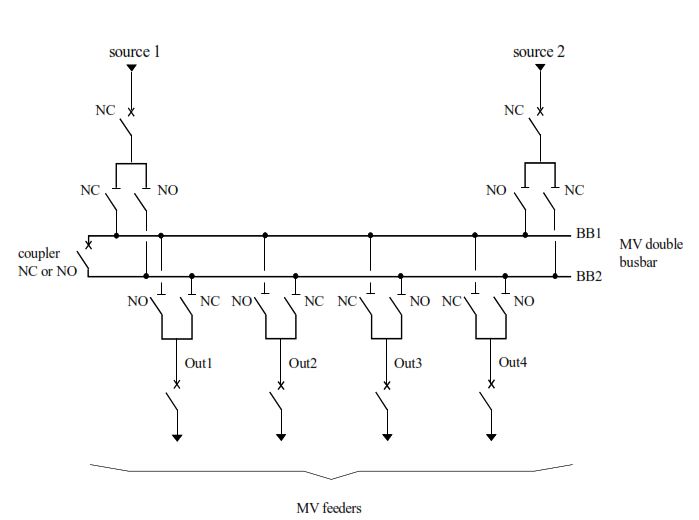In electrical power systems, substations and switchyards form critical nodes that ensure the efficient, safe, and reliable transfer of electricity from generation sources to consumers. While often discussed interchangeably in casual contexts, they exhibit distinct characteristics based on their functions, equipment, and placements within the grid. This comprehensive overview draws from engineering principles and industry practices to delineate their roles, designs, components, safety considerations, and maintenance aspects, providing a thorough understanding for stakeholders in power infrastructure.
Article Content
Overview of Electrical Power Systems Context
Electricity generation typically occurs at power plants (e.g., thermal, hydro, solar, or wind), where voltage is produced at relatively low levels for safety and efficiency. This power must then be transmitted over long distances at high voltages to minimize losses, and subsequently distributed at lower voltages for consumer use. Substations and switchyards facilitate these transitions. Substations primarily handle voltage transformations and local distribution, while switchyards focus on high-voltage switching and routing near generation points. Together, they interconnect with grid stations—large-scale facilities for bulk power transfer—to maintain system balance and integrate renewables.
Switchyard vs Substation : Definitions and Roles

A substation is a multifaceted installation within the power grid responsible for voltage transformation, switching, protection, and control of electrical power. It converts voltage from high to low (or vice versa) using transformers, enabling efficient transmission over long distances and safe distribution to end users. Substations operate across various voltage levels, such as stepping down from 230 kV transmission to 12 kV distribution, and include mechanisms to regulate voltage, balance loads, and protect against surges. They are essential for tying transmission and distribution systems, often located near urban or industrial load centers to minimize power losses and ensure localized supply stability. Substations can be outdoor, indoor, or gas-insulated (GIS) types, with indoor variants common in urban areas to reduce noise and environmental impact.

In contrast, a switchyard (or switching substation) is a specialized facility that operates exclusively at a single voltage level, without transformers for voltage alteration. Its primary role is to route power, facilitate connections between generators, transmission lines, and other grid components, and enable fault isolation for maintenance without widespread disruptions. Switchyards provide operational flexibility by allowing sections of the grid to be disconnected safely, and they are typically situated adjacent to power plants or major grid interconnections. They emphasize switching operations, such as using circuit breakers to interrupt faults, and support the initial integration of generated power into the transmission network. In some definitions, switchyards represent the outdoor switching section of a larger substation, housing high-voltage equipment in open-air setups due to space and voltage requirements.
Key Components and Equipment
Substations and switchyards share some equipment but differ in scope. Substations feature power transformers for voltage conversion, circuit breakers for fault interruption, disconnect switches, voltage regulators, capacitors for power factor correction, and protective relays. They may also include control rooms with SCADA (Supervisory Control and Data Acquisition) systems for remote monitoring, along with grounding transformers to manage neutral currents and surge arresters for lightning protection.
Switchyards, lacking transformers, center on busbars (conductive bars for power distribution), circuit breakers, disconnectors (isolators), current and voltage transformers for measurement, protective relays, and surge arresters. They often use strung or tubular busbars for interconnections and marshalling kiosks for cabling. Both facilities require support structures like steel lattices or tubular poles to hold overhead equipment, fabricated from galvanized steel or aluminum for corrosion resistance and seismic resilience.
Design Considerations
Design for both emphasizes reliability, cost-efficiency, and expandability. Substation layouts vary by bus configuration (e.g., single bus, double bus, or breaker-and-a-half) to ensure redundancy during faults. Factors include site selection based on load forecasts, environmental impacts, and civil works like cable trenches, control buildings, and fencing. Switchyard designs focus on sectional clearances, security distances, and fault-limiting equipment such as reactors or static VAR compensators to manage harmonics and power factors. Optimization involves balancing initial costs with long-term operational needs, with simulations for fault coordination and automation integration. High-voltage switchyards prioritize outdoor placements for equipment size, while substations may incorporate indoor elements for protection against weather or pollution.
Safety and Maintenance Practices
Safety is paramount due to high voltages and potential hazards like electrocution, arcs, or chemical exposures from insulating oils. Both require robust earthing systems to control touch and step voltages, with earth grids sized based on soil resistivity and fault currents. Lightning protection uses masts, shield wires, or arresters, applying techniques like the rolling sphere method for coverage. Fences, surveillance, and fire suppression systems (e.g., water or foam) mitigate risks, while personal protective equipment and lockout/tagout procedures prevent accidents during operations.
Maintenance involves regular inspections, testing of relays and breakers, and cleaning to prevent failures. Substations demand transformer oil analysis and bushing checks, while switchyards focus on busbar integrity and isolator alignments. SCADA enables predictive maintenance, reducing downtime and costs. Training emphasizes hazard awareness, with standards from bodies like IEEE ensuring compliance.
Benefits and Interconnections in the Grid
Substations and switchyards collectively enhance grid resilience by enabling fault isolation, load balancing, and renewable integration. Substations reduce transmission losses through voltage optimization, while switchyards minimize outages by allowing quick rerouting. In interconnected systems, power flows from generators through switchyards into transmission lines, managed by grid stations for regional balance, and finally transformed at substations for delivery. This hierarchy prevents bottlenecks and supports scalability, with modern designs incorporating smart grid technologies for real-time monitoring.
Variations in terminology exist; for example, some sources view switchyards as integral outdoor components of substations, particularly in high-voltage contexts. Ultimately, understanding these facilities informs better infrastructure planning, ensuring sustainable and reliable power supply amid growing energy demands.
